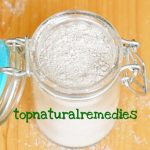Top 22 Foods Rich in Thiamine (Vitamin B1)
Thiamine is essential for the metabolic reactions through which the body converts carbohydrates (and not only) into energy, which it stores in the form of adenosine triphosphate. Thus, its deficiency adversely affects all cells, but the most damaging effects will be felt in the nervous system, because this is the most dependant on oxidative metabolism.

Contents
Causes of thiamine deficiency
- Malnutrition
- Alcoholism
- A diet high in foods that contain thiamine antagonists
- polyphenols (caffeic acid, chlorogenic acid, tannic acid etc.) – black tea, coffee, betel nuts, red cabbage, blueberries, red currants, red beets
- flavonoids (quercetin, rutin etc.) – almost all fruits and vegetables (but ascorbic acid, tartaric acid, and citric acid, also present in many fruits and vegetables, increase thiamine bioavailability)
- Increased demand (hyperthyroidism, pregnancy, lactation, strenuous exercise, fever)
- Impaired absorption (prolonged diarrhea, persistent vomiting)
- Impaired metabolism (hepatic insufficiency)
Early symptoms of thiamine deficiency
- fatigue
- irritability
- poor memory
- sleep disturbances
- precordial pain
- anorexia
- abdominal discomfort
Health problems related to thiamine deficiency
- Dry beriberi (peripheral neurologic deficits due to thiamin deficiency)
- swelling, tingling, or burning sensation in the hands and feet
- paresthesias in the toes
- muscle cramps in the calves, pains in the legs
- muscle wasting
- confusion
- trouble breathing (because of fluid in the lungs)
- uncontrolled eye movements
- Wet beriberi (myocardial disease due to thiamin deficiency)
- vasodilation, tachycardia
- sweating, warm skin
- lactic acidosis
- heart failure (with orthopnea and pulmonary and peripheral oedema)
- Wernicke-Korsakoff syndrome (a brain disorder caused by thiamine deficiency)
- Wernicke encephalopathy: apathy, uncontrolled eye movements, ataxia, ophthalmoplegia, impaired consciousness
- Korsakoff psychosis: mental confusion, dysphonia, and confabulation with impaired memory of recent events
- Optic neuropathy
- bilateral visual loss
- cecocentral scotomas
- impaired colour perception
The best foods for treating thiamine deficiency
- Rice bran (crude): 2.8 mg/100 g (184%DV)
- Spirulina (dried): 2.4 mg/100 g (159%DV)
- Wheat germ (crude): 1.9 mg/100 g (125%DV)
- Flaxseed (raw): 1.6 mg/100 g (110%DV)
- Sunflower seeds (kernels, dried): 1.5 mg/100 g (99%DV)
- Sesame seeds (kernels, toasted): 1.2 mg/100 g (80%DV)
- Macadamia nuts (raw): 1.2 mg/100 g (80%DV)
- Oat bran (raw): 1.2 mg/100 g (78%DV)
- Soy (flour): 1.1 mg/100 g (73%DV)
- Black beans (raw): 0.9 mg/100 g (60%DV)
- Pistachio nuts (raw): 0.9 mg/100 g (58%DV)
- Soybeans (raw): 0.9 mg/100 g (58%DV)
- Lentils (raw): 0.9 mg/100 g (58%DV)
- Navy beans (raw): 0.8 mg/1oo g (52%DV)
- Oats (raw): 0.8 mg/100 g (51%DV)
- Pinto beans (raw): 0.7 mg/100 g (48%DV)
- Pecan nuts (raw): 0.7 mg/100 g (44%DV)
- Hazelnuts (raw): 0.6 mg/100 g (43%DV)
- Wheat bran (crude): 0.5 mg/100 g (35%DV)
- Lima beans (raw): 0.5 mg/100 g (34%DV)
- Barley (flour): 0.4 mg/100 g (25%DV)
- Green peas (raw): 0.3 mg/100 g (18%DV)



